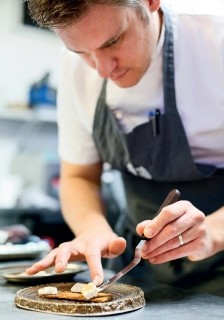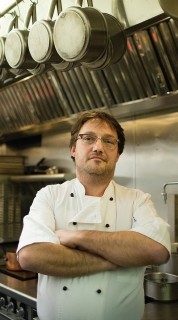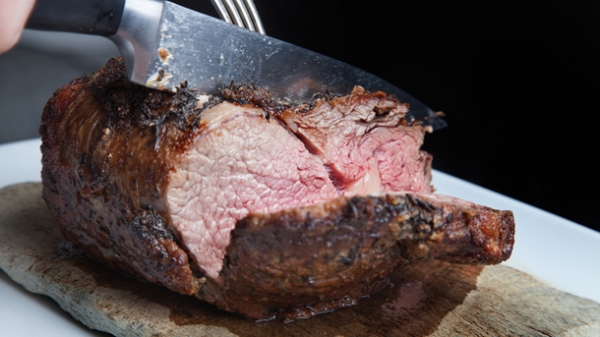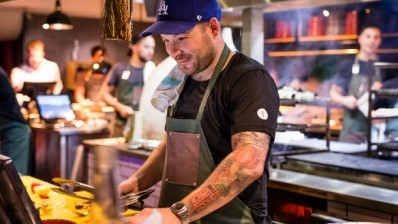The whole hog: 5 ways chefs are embracing nose-to-tail dining
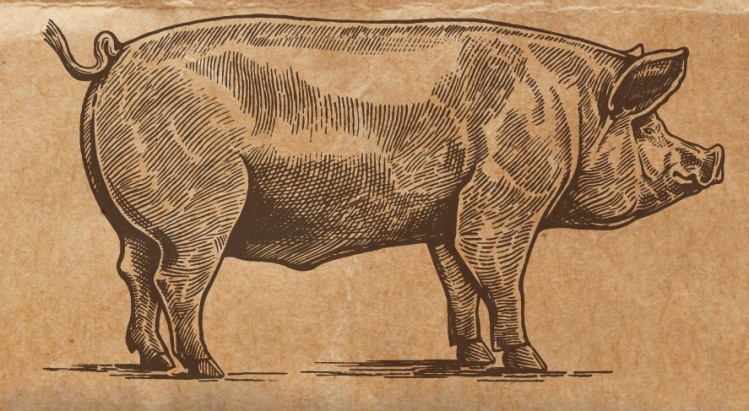
It’s almost 20 years since Nose to Tail Eating was first published, catapulting previously unloved bits of animals into the public’s consciousness. But despite all the praise Fergus Henderson’s landmark book has rightly received, tails, trotters and tongues are still a rare sight on menus. Perhaps more surprising is that while pork belly and flat iron steak may have crept into the public’s meat vocabulary thanks to the work of Henderson’s restaurant St John and more recently to burgeoning steakhouse chain Flat Iron, the vast majority of restaurants still stick with the tried and trusted. Think pork loin, rack of lamb and prime cuts of steak.
This is partly because diners order what they know, but cheaper cuts also require time and attention in the kitchen. After all it’s a lot easier to buy a rib eye from the butcher and sling it in a pan than to spend several hours slow braising a piece of meat most people have never heard of.
1. Thrifty thinking
But as ingredients costs go up, chefs not willing to invest a little extra effort in the kitchen could be missing a trick. The pig’s head terrine at Oliver’s in Falmouth is a case in point. Chef and owner Ken Symons buys his pork from Primrose Herd, which specialises in slow-growing rare breeds. Tenderloin comes in at £9.50/kg, but a pig’s head costs just £2.50. Two are enough to make 16 portions of terrine, which is served as a starter for about £7. The dish commands a highly respectable margin of well over 70%, but Symons has to work hard to achieve that return. The heads are cured in salt, sugar, juniper and bay leaves for two days, before being slow roasted for 14 hours at 105°C, meaning that it’s something that has to be planned ahead.
“It’s a dish that needs a lot of work, but it’s definitely worth the effort,” says Symons, who believes the main reason why more restaurants don’t go to similar lengths with certain dishes is that thriftiness is no longer taught at catering colleges. “There are lots of talented young chefs out there but they don’t have the skills or mindset to go down that path,” he says.
Nick Galer, chef-patron at ‘modern inn’ The Miller of Mansfield in Goring-on-Thames takes a similarly frugal approach with several unusual cuts on the menu. They don’t come much more unusual than cockscomb, which the chef uses as part of a chicken starter comprising chicken parfait, egg yolk, black pudding crumble and crispy chicken skin on toasted brioche.
The combs are blanched and then braised in 5-10kg batches in gravy for 30 hours at 85°C. They are then frozen and used as required. The combs, which have an intense chicken flavour, cost £12.50/kg with each portion working out at around 30p. The dish sells for £8.50, which means a healthy 82% margin.
“If you factor in the work the chefs put in, it has an impact, but they are there anyway and we’re already paying them,” says former Fat Duck Group chef Galer. “We wouldn’t have put the dish on in the first year, but the business is three years old now and we have grown in confidence. Our customers trust that if we put something on the menu, it’s going to be good.”
Other unusual cuts on the menu include trotter and ham hock croquettes and bavette (flank) steak with Roscoff onions, smoked garlic purée and chimichurri. The beef costs £12.95/kg compared with £21 for sirloin with thinner pieces bonded together using meat glue to ensure zero wastage. It is then cooked for 16 hours sous vide at 53°C and seared to order.
2. Sous vide
The increased prevalence of water baths is encouraging chefs to do more with less fashionable cuts, according to Paul Wedgwood, chef-patron at Wedgwood in Edinburgh. Wedgwood has always worked with lesser-used cuts, such as lamb breast, beef shin and ox tongue and is also a big fan of haggis, which makes good use of a sheep’s heart, liver and lungs.
“Up until nine months ago, I thought sous vide was not for me,” he says. “But some of my chefs introduced me to it and we’ve definitely benefited. We have a tiny kitchen and one oven, so it has helped free up space.”
It’s a trend also noticed by Simon Smith, director of customer services at butcher Aubrey Allen, who says sous vide techniques have made previously unfashionable cuts more viable. “Some cuts of beef such as the bistro rump (taken from the most tender part of the rump) tend to have a tightness to the fibres when cooked traditionally, but when cooked sous vide first and finished in a pan, it really helps the tenderness,” he says.
3. Offal takeover
Offal is also becoming much more on trend, as chefs embrace more interesting and traditional dishes. The newly opened restaurant Claude Bosi at Bibendum, for example, features a number of classic French dishes on the menu made from lesser cuts, including veal sweetbreads, calf ’s brain and tripe – which is served with a pig’s ear and ham cake.
Thai barbecue restaurant Smoking Goat in Soho has taken it one step further with its offal Mondays. The idea was to give co-founder Ben Chapman and head chef Ali Borer the chance to experiment, and dishes to have appeared as part of the ‘offal takeover’ have included duck offal laab; suckling pig liver Isaan-style nam tok; Makassar-style smoked beef cheek; and spicy fried lamb kidney nam prik pao.
Say no to wasted meat
While a lot of chefs pay lip service to nose-to-tail eating, there is no doubting French chef Fred Berkmiller’s commitment to the cause.
The owner of l’Escargot Bleu and l’Escargot Blanc in Edinburgh regularly serves dishes made with pig snouts, duck neck, chicken oysters and even makes his own black pudding from duck blood.
“It’s part of who I am and I love it,” he says. “It shouldn’t be a trend or a fad, it should be how everyone cooks. Meat is something to be taken seriously. Not wasted. But it’s also more cost-effective and pushes chefs to learn.”
The duck necks, which cost £2.50-£3.50/kg, are roasted overnight and the rich meat picked for pies, rillettes and terrines, while chicken oysters (£6/kg) are turned into little kebabs and served with risotto. The snouts (£5/kg) are blanched for three hours and combined with chicken quennelles to make a terrine, which is served with a gribiche sauce. All the dishes are used as starters on the set lunch and early dinner menus.
“You have to put extra labour in, but the margins are around 75% and it’s a way of being a little bit different,” he says.
4. Barbecue movement
The growth in popularity of barbecue restaurants has also had a hand in bringing lesser-used cuts to the table. “Low and slow cooking of meat has become fashionable,” says Smith. “A rib eye of free range pork with a high level of intramuscular fat cooked on a Big Green Egg has a wonderful smoky taste.”
At meat supplier Danish Crown, foodservice director Allan Hansen says that the rise of barbecue restaurants is having an influence with sales of beef ribs, brisket and pork collar on the up.
“Demand for new textures and flavours means that chefs are not only experimenting with new cuts and the influence meat-fat ratio can have on a dish, but also dry-ageing – which is gaining momentum,” says Hansen.
Danish Crown recently collaborated with Neil Rankin, who launched barbecue and open fire pit restaurant Temper in Soho last year. The chef, known for using lesser cuts of meat (Temper serves a range of beef, pork, lamb and goat cuts cooked in different ways), worked with the meat supplier on a new recipe collection that uses dry-aged beef. “Neil found dry aging added ‘bulk’ and helped to create some exciting flavours within his dishes that include smashed entrecôte (the steak is flattened and slashed) and beef rib butter masala,” adds Hansen.
5. Tell a story
Danish Crown dry ages beef in maturing rooms containing Himalayan rock salt, which the company says helps reduce humidity and better concentrate flavour. “Dry-ageing is an interesting story to share and allows restaurants to price that little bit higher,” says Hansen.
Ultimately, it’s this ability to sell ‘interesting stories’ to diners that will get them to order dishes made with lesser-known cuts in the first place. As Simon Smith at Aubrey Allen says: “Restaurants that have gained success using lesser-known cuts have done so because they have been able to get the buy in from their customers. Thirty years ago, belly pork wasn’t seen as a prime cut – now it’s the most sought-after restaurant cut of pork.”
This article first appeared in the May 2017 issue of Restaurant Magazine. Subscribe here from just £70 a year.
